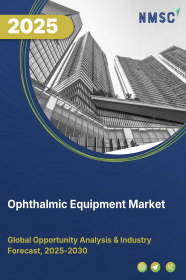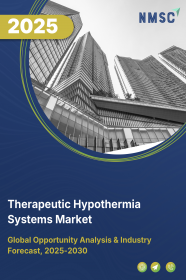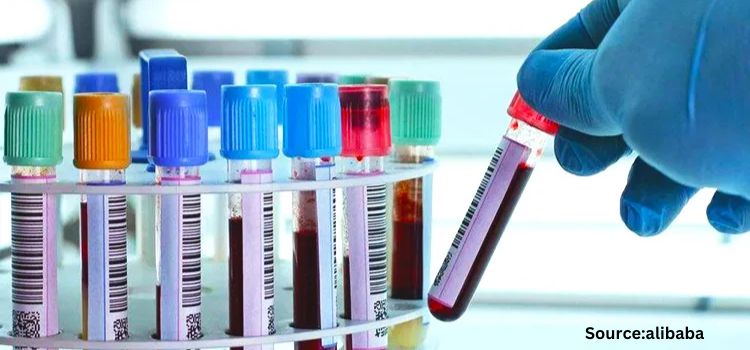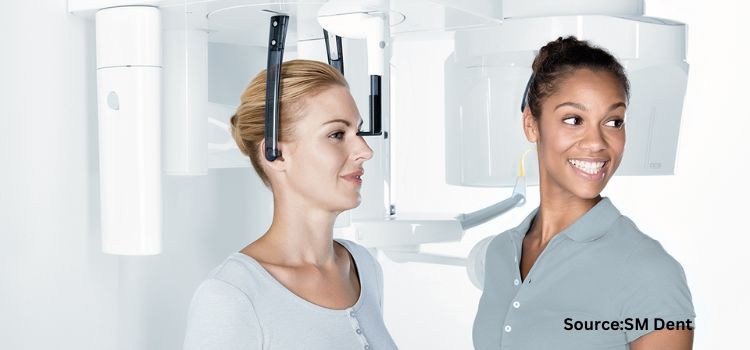
Asia-Pacific In-Vitro Diagnostics Market by Type (Reagents, Instruments, and Software & Services), by Technique (Immunodiagnostics, Hematology, Molecular Diagnostics, Tissue Diagnostics, Clinical Chemistry, and Other IVD Techniques), by Application (Infectious Diseases, Cancer, Cardiac Diseases, Immune System Disorders, Nephrological Diseases, Gastrointestinal Diseases, and Others) – Opportunity Analysis and Industry Forecast, 2024–2030
Industry: Healthcare | Publish Date: 15-Feb-2025 | No of Pages: 225 | No. of Tables: 145 | No. of Figures: 110 | Format: PDF | Report Code : HC2345
US Tariff Impact on Asia-Pacific In-Vitro Diagnostics Market
Trump Tariffs Are Reshaping Global Business
Asia-Pacific In-Vitro Diagnostics Market Overview
The Asia-Pacific In-Vitro Diagnostics Market size was valued at USD 27.51 billion in 2023, and is predicted to reach USD 40.79 billion by 2030, at a CAGR of 5.4% from 2024 to 2030. In-vitro diagnostics (IVD) refers to a wide range of medical tests conducted on samples of bodily fluids, tissues, or cells outside of the body to diagnose diseases, monitor therapy, and assess overall health conditions. IVD tests are performed in laboratory settings using various techniques and technologies, including immunoassays, molecular diagnostics, clinical chemistry, hematology, and microbiology.
These tests enable early detection of diseases, allowing for timely intervention and treatment initiation. By providing rapid and accurate results, IVD tests facilitate personalized medicine, guiding tailored treatment approaches based on individual patient characteristics. Also, immunoassay experiments provide valuable insights into biological systems, enabling scientists and researchers to make significant contributions to fields such as medicine, biotechnology, and pharmacology. They serve as essential tools for understanding fundamental biological processes and developing innovative solutions to address health challenges.
Increasing Chronic Disease Prevalence in Asia-Pacific Drives Significant Market Growth
The high prevalence of chronic diseases, particularly cardiovascular diseases and cancer, highlights the crucial need for immunodiagnostic tests that enable early detection and continuous monitoring. This growing demand is further amplified by substantial healthcare spending in the region, which strengthens healthcare infrastructure and increases access to diagnostic services.
Enhanced financial resources allow for the adoption of advanced diagnostic technologies, improving the ability to diagnose and manage these chronic conditions effectively. Consequently, the combination of rising chronic disease rates and increased healthcare expenditure is driving significant growth in the in-vitro diagnostic market in the Asia-Pacific region.
Technological Advancements Drive the Growth of Market in Asia-Pacific
Technological innovations by market players are significantly enhancing diagnostic capabilities, leading to the expanding Asia-Pacific in-vitro diagnostics market demand. These advancements enable more accurate, efficient, and faster diagnostic tests, which are essential for early detection and effective management of diseases.
Coupled with evolving healthcare needs and substantial investments in healthcare infrastructure, the region is witnessing a surge in demand for advanced diagnostic solutions. This creates significant growth opportunities for the in-vitro diagnostics market, as healthcare providers adopt these cutting-edge technologies to improve patient outcomes and meet the rising demand for high-quality clinical diagnostic services.
High Research, Development, and Regulatory Approval Costs Hinder the Market Growth
High costs associated with research, development, and regulatory approval are significant factors restraining the Asia-Pacific IVD market expansion. Operating within this sector necessitates significant financial investment for companies to navigate the complex landscape of research and development.
This investment often encompasses extensive clinical trials, laboratory testing, and product refinement to guarantee accuracy and reliability. Additionally, obtaining regulatory approvals from agencies such as the FDA requires strict adherence to stringent standards, further compounding the financial burden. This financial constraint can discourage potential adopters from market expansion.
Introduction of Point-of-Care Testing Solutions in IVD Creates Opportunity
Point-of-care testing (POCT) is poised to significantly drive the Asia-Pacific in-vitro diagnostics market demand in the forthcoming years. POCT serves as a valuable complement to laboratory testing, especially in situations where immediate results are crucial, such as emergency departments, ambulances, and remote healthcare settings.
With POCT technologies offering rapid tests for infectious diseases, cardiac markers, glucose monitoring, pregnancy testing, and more, healthcare providers can quickly assess patients' conditions and make timely treatment decisions.
By integrating POCT with traditional IVD, healthcare providers can enhance their diagnostic capabilities, delivering more efficient and patient-centered care. This integration streamlines workflows, allowing for faster diagnosis and treatment initiation, ultimately leading to improved patient outcomes.
China Dominates the Asia-Pacific In-Vitro Diagnostics Market Share
The prevalence of chronic diseases significantly drives the growth of the in-vitro diagnostics market in China. According to National Institutes of Health, in China, there are higher rates of cardiovascular disease, cancer, chronic respiratory disease, and diabetes compared to regions with similar social development levels. These non-communicable diseases are responsible for 88.5% of all deaths and contribute to 84.9% of the disease burden, as measured by disability-adjusted life years (DALYs).
As these conditions continue to rise, there is an increasing demand for accurate and efficient diagnostic solutions to effectively manage and monitor patient health. IVD tests play a crucial role in this landscape by enabling early disease detection, personalized treatment strategies, and ongoing disease monitoring.
Singapore to Witness Substantial Growth in the Market
Increased healthcare expenditure in Singapore serves as a significant factor for the growth of the in-vitro diagnostics market. According to World Trade Administration, the Singapore National Health Expenditure is projected to reach around USD 44 billion by 2030 to address both short and long-term infrastructure needs and to provide support for healthcare provisions and subsidies for low-income individuals. This investment creates opportunities for the adoption of advanced in-vitro diagnostics technologies, leading to improved disease detection, monitoring, and personalized treatment options.
Competitive Landscape
The promising players operating in the Asia-Pacific in-vitro diagnostics industry include Roche Holding AG, Abbott Laboratories, Thermo Fisher Scientific Inc, Danaher Corporation, Becton, Dickinson and Company, Siemens Healthineers AG, bioMérieux SA, Sysmex Corporation, QIAGEN N.V., and Bio-Rad Laboratories, Inc., and others.
Asia-Pacific In-Vitro Diagnostics Market Key Segments
By Type
-
Reagents
-
Instruments
-
Software & Services
By Technique
-
Immunodiagnostics
-
Enzyme-Linked Immunosorbent Assay (ELISA)
-
Rapid Tests
-
Chemiluminescence Immunoassay (CLIA)
-
Enzyme-linked Immunosorbent spot (ELISpot)
-
Radioimmunoassay (RIA)
-
Western Blot
-
-
Hematology
-
Molecular Diagnostics
-
PCR
-
INAAT
-
Hybridization
-
DNA diagnostics
-
Microarray
-
Other Molecular Diagnostics
-
-
Tissue Diagnostics
-
Clinical Chemistry
-
Basic Metabolic Panel
-
Liver Panel
-
Renal Profile
-
Lipid Profile
-
Thyroid Function Panel
-
Electrolyte Panel
-
Speciality Chemicals
-
-
Other IVD Techniques
By Application
-
Infectious Diseases
-
Cancer
-
Cardiac Diseases
-
Immune System Disorders
-
Nephrological Diseases
-
Gastrointestinal Diseases
-
Others
By End User
-
Stand Alone Laboratory
-
Hospitals
-
Academics and Medical Schools
-
Point of Care Testing
-
Other End Users
By Country
-
China
-
India
-
South Korea
-
Australia
-
Indonesia
-
Singapore
-
Taiwan
-
Thailand
-
Rest of Asia-Pacific
REPORT SCOPE AND SEGMENTATION:
|
Parameters |
Details |
|
Market Size Value in 2023 |
USD 27.51 billion |
|
Revenue Forecast in 2030 |
USD 40.79 billion |
|
Value Growth Rate |
CAGR of 5.4% from 2024 to 2030 |
|
Analysis Period |
2023–2030 |
|
Base Year Considered |
2023 |
|
Forecast Period |
2024–2030 |
|
Market Size Estimation |
Billion (USD) |
|
Growth Factors |
|
|
Companies Profiled |
10 |
|
Countries Covered |
8 |
|
Customization Scope |
Free customization (equivalent up to 80 working hours of analysts) after purchase. Addition or alteration to country, regional, and segment scope. |
|
Pricing and Purchase Options |
Avail customized purchase options to meet your exact research needs. |
KEY PLAYERS
-
Roche Holding AG
-
Abbott Laboratories
-
Thermo Fisher Scientific Inc.
-
Danaher Corporation
-
Becton, Dickinson and Company
-
Siemens Healthineers AG
-
bioMérieux SA
-
Sysmex Corporation
-
QIAGEN N.V.
-
Bio-Rad Laboratories, Inc.

















 Speak to Our Analyst
Speak to Our Analyst





















